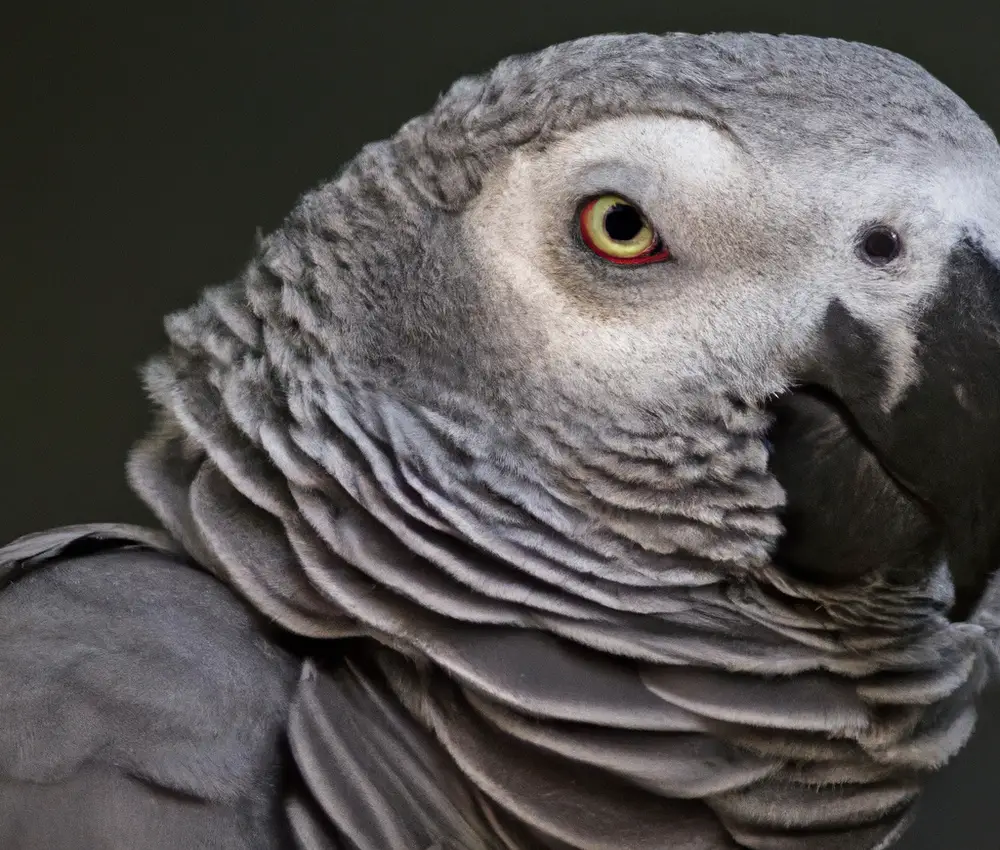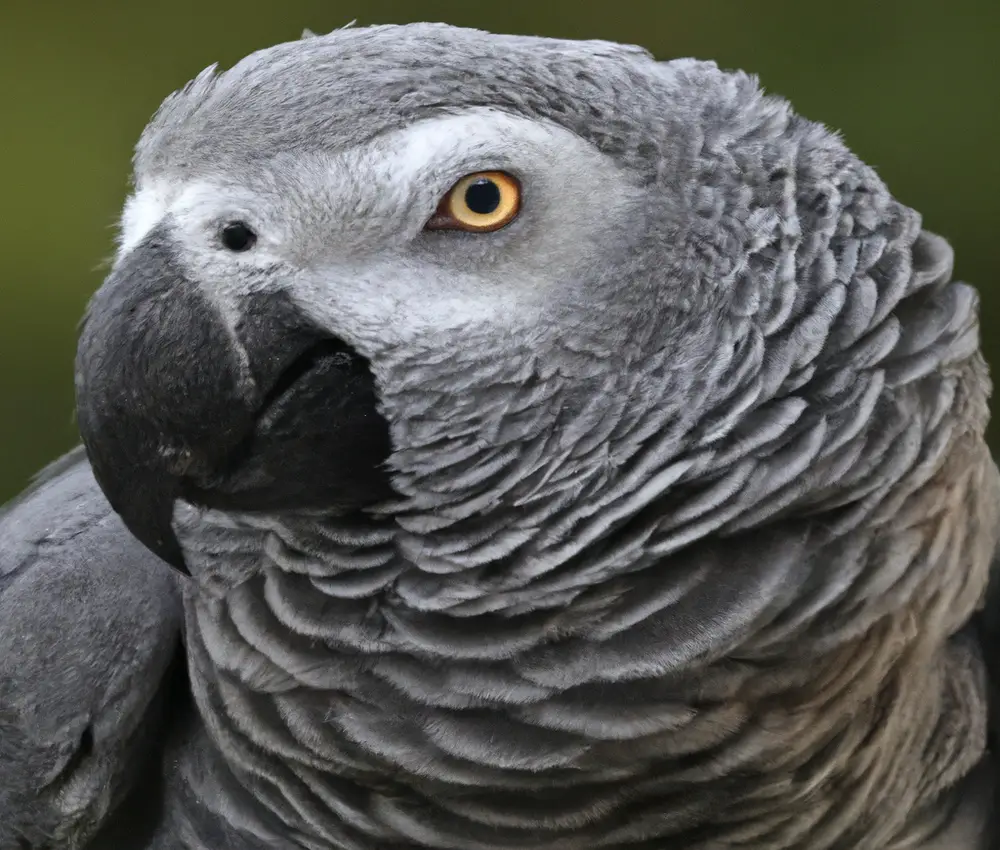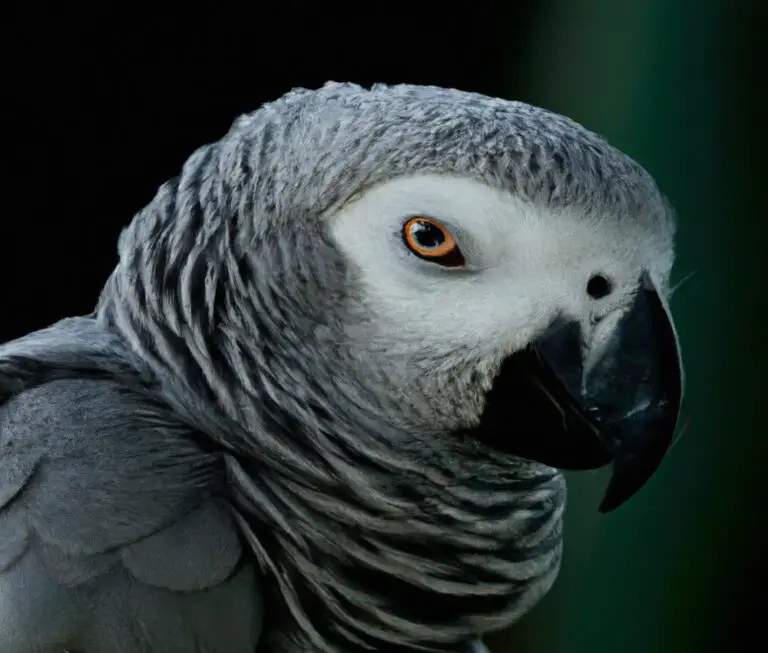What Is The Size Range Of African Grey Parrots?
Key Takeaways:
- The size range of African Grey Parrots typically falls between 10 to 14 inches long.
- Male and female African Greys are generally similar in size and do not exhibit significant sexual dimorphism.
- African Grey Parrots have a wingspan of around 18 to 20 inches.
- These parrots can weigh anywhere between 12 to 20 ounces.
Have you ever wondered just how big African Grey Parrots can get? These magnificent birds are known for their intelligence and vocal abilities, but what about their physical size?
In this article, I will unravel the mystery of the size range of African Grey Parrots.
From discussing the factors that influence their size to exploring the average size range and potential differences between males and females, we’ll cover it all. Whether you’re a current parrot owner or considering adding one to your family, understanding their size is crucial for providing the best care possible.
So, let’s dive in and discover the fascinating world of African Grey Parrot sizes!
| Age | Size Range (Length) |
| Juvenile | 10 – 12 inches |
| Adult | 12 – 14 inches |
Understanding African Grey Parrots
To understand African Grey Parrots, it’s important to consider their physical characteristics and behavior.
Physical Characteristics of African Grey Parrots
African Grey Parrots are known for their striking physical characteristics. They have a medium-sized body with a short square-shaped tail.
Their feathers are predominantly gray, with a lighter shade on their face and a darker shade on their wings and back.
African Grey Parrots are also known for their large, powerful beak, which helps them crack open nuts and seeds. Additionally, they have distinctive red tail feathers, which become more visible when they spread their wings.
Overall, African Grey Parrots have a unique and beautiful appearance that sets them apart from other parrot species.
The Size Range of African Grey Parrots
African Grey Parrots can vary in size, but typically range from 12 to 14 inches in length.
How Big Do African Grey Parrots Get?
African Grey Parrots can grow to be about 12 to 14 inches (30 to 36 cm) long from beak to tail.
They have a wingspan of around 18 to 20 inches (46 to 51 cm).
Their weight can range from 12 to 20 ounces (340 to 570 grams).

Factors That Influence the Size of African Grey Parrots
The factors that influence the size of African Grey Parrots include genetics, diet, and overall health.
African Grey Parrots with good genetics tend to grow bigger and reach their full size potential.
Providing a balanced and nutritious diet is crucial for their growth.
Additionally, ensuring their overall health, including regular vet check-ups and proper care, plays a significant role in their size development.

Average Size Range of African Grey Parrots
The average size range of African Grey Parrots is between 12 and 14 inches (30 to 36 cm) in length. They typically weigh around 14 to 22 ounces (400 to 620 grams).
However, it’s important to note that individual birds may vary slightly in size within this range.
Size Differences Between Male and Female African Grey Parrots
Male African Grey Parrots tend to be slightly larger than females.
On average, males have a length of about 12 to 14 inches and weigh around 400 to 550 grams.
Females, on the other hand, are usually a bit smaller, measuring about 11 to 13 inches in length and weighing around 350 to 500 grams.
While the size difference is not significant, it is a noticeable characteristic between the two genders.
Growth and Development of African Grey Parrots
African Grey Parrots go through various stages of growth and development. When they hatch from their eggs, they are completely dependent on their parents for food and care.
As they grow, they start to develop feathers and gain strength in their wings for flight.
They also become more independent and are able to feed themselves. During this time, it’s important to provide them with a nutritious diet to support their growth.
With proper care and attention, African Grey Parrots continue to develop and mature over time.
Importance of Knowing the Size Range
Knowing the size range of African Grey Parrots is important for various aspects such as housing, feeding, and handling.
Housing and Cage Requirements
To provide a suitable environment for your African Grey Parrot, it’s essential to understand their housing and cage requirements.
Here’s what you need to know:
- Size matters: The cage should be spacious enough for the parrot to move around, stretch its wings, and exercise. A minimum cage size for an African Grey Parrot is typically 36x24x48 inches (LxWxH.
- Bar spacing: Make sure the bars of the cage are appropriately spaced to prevent the bird from getting caught or escaping. A bar spacing of 0.75 to 1 inch is ideal for African Grey Parrots.
- Material: Choose a sturdy, non-toxic material for the cage, such as stainless steel or powder-coated wrought iron. Avoid cages made of galvanized metal, as they can be harmful if the parrot ingests any flakes or rust.
- Perches and climbing opportunities: Provide multiple perches of different diameters and textures to promote foot exercise. Branches and ropes can also be added to create a more interactive and stimulating environment.
- Toys and enrichment: African Grey Parrots are highly intelligent and require mental stimulation. Include toys, foraging opportunities, and puzzles to keep them engaged and prevent boredom.
- Location: Place the cage in a quiet area away from drafts, direct sunlight, and household hazards. Avoid placing it in the kitchen due to potential exposure to fumes and smoke.
- Regular cleaning: Clean the cage, perches, and toys regularly to maintain a hygienic environment and prevent the buildup of bacteria or parasites.
By considering these housing and cage requirements, you’ll create a comfortable and safe living space for your African Grey Parrot.

Diet and Feeding Considerations
African Grey Parrots have specific dietary needs that should be met for their overall health and well-being. Their diet should consist of a variety of fresh fruits and vegetables, high-quality pellets, and a small amount of seeds and nuts.
These parrots also benefit from regular access to clean, fresh water and occasional treats like whole grain or whole wheat bread.
It’s important to avoid feeding them foods that are toxic to parrots, such as chocolate, caffeine, avocado, and alcohol. Additionally, offering a calcium supplement can help support their bone health.
Providing a balanced and nutritious diet is essential for the long-term care of African Grey Parrots.
Handling and Interaction
When it comes to handling and interacting with African Grey Parrots, it’s important to approach them with patience and respect. These parrots can be sensitive and may require time to bond with their owners.
Avoid sudden movements and loud noises, as this can startle them.
Slowly introduce your hand and allow the parrot to become comfortable with your presence. Avoid grabbing or squeezing them, as they can easily become stressed.
Instead, gently stroke their feathers and offer treats to build trust.
Interaction should be positive and rewarding, with plenty of mental and physical stimulation through toys, puzzles, and socialization. Remember, each parrot is unique, so take the time to understand their individual preferences and needs.

Compatibility with Other Birds
African Grey Parrots are generally not known for being highly social birds and can be quite territorial.
This can make it challenging for them to coexist peacefully with other bird species.
It is best to keep African Grey Parrots in separate cages or aviaries to prevent any potential conflicts or stress.
If you do decide to introduce them to other birds, careful supervision and gradual introductions are necessary to ensure everyone’s safety and well-being.
Commonly Asked Questions about African Grey Parrots
Curious about African Grey Parrots? Here are the answers to some commonly asked questions about their size range.
What is the wingspan of African Grey Parrots?
The wingspan of African Grey Parrots typically ranges from 46 to 52 cm (18 to 20 inches).
This measurement refers to the distance between the tips of the bird’s outstretched wings.
The wingspan may vary slightly depending on factors such as age, genetics, and individual bird health.
Do African Grey Parrots grow throughout their lifetime?
Yes, African Grey Parrots do grow throughout their lifetime.
Like most avian species, they experience continuous growth and development.
However, the rate of growth may slow down as they reach adulthood.
It’s important to provide proper nutrition and care to support their ongoing growth and overall well-being.
Can the size of African Grey Parrots vary depending on their subspecies?
Yes, the size of African Grey Parrots can vary depending on their subspecies. There are two main subspecies, the Congo African Grey and the Timneh African Grey, and they have slight differences in size.
The Congo African Grey is generally larger, with an average length of 12-14 inches, while the Timneh African Grey is slightly smaller, measuring around 10-12 inches.
These size variations are important to consider when caring for these birds.
Are African Grey Parrots larger in the wild compared to captivity?
Yes, African Grey Parrots tend to be larger in the wild compared to captivity.
In the wild, they have access to a variety of foods and more opportunities for exercise, which can contribute to their larger size.
In captivity, their diet and activity levels may be more limited, leading to slightly smaller sizes.

Are there any size differences between African Grey Parrots and other parrot species?
Yes, there are size differences between African Grey Parrots and other parrot species. African Grey Parrots tend to be larger than many other parrot species, with an average length of 13-16 inches (33-40 cm) and weighing around 400-600 grams.
They have a stocky build and a broad wingspan, which contributes to their larger size compared to other parrot species.
Final Verdict
Understanding the size range of African Grey Parrots is essential for their proper care and well-being.
By knowing their physical characteristics and growth patterns, we can provide appropriate housing, diet, and interaction for these intelligent birds.
It is important to note that while there may be slight variations in size among individuals and subspecies, the average size range remains fairly consistent.
By considering the size of African Grey Parrots, we can ensure their happiness and longevity as they become cherished companions in our lives.








